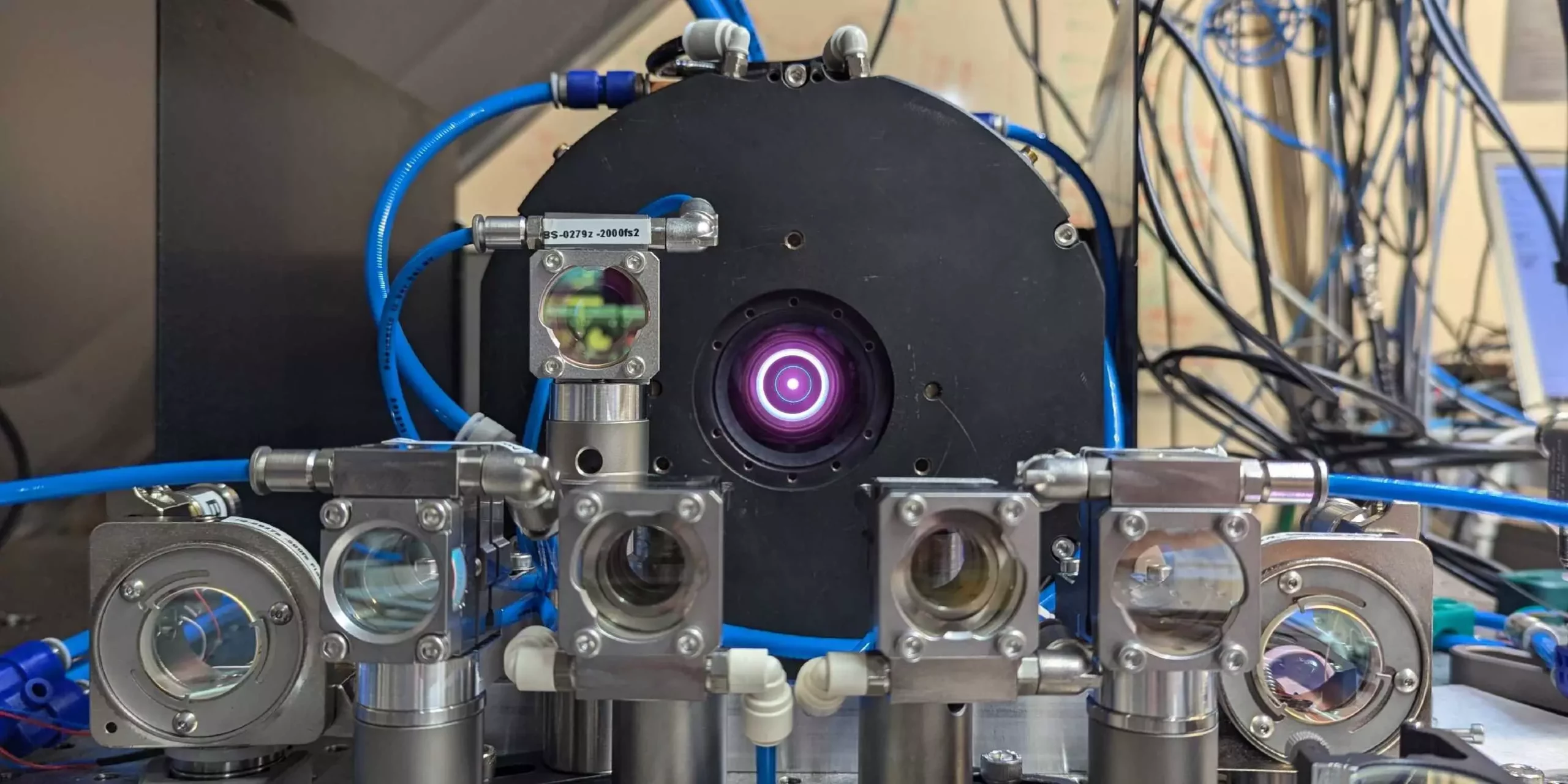In the realm of photonics, the term “laser” often evokes images of powerful, focused light beams capable of cutting through materials or delivering precision in various applications. Traditionally, lasers have operated continuously, generating stable and constant light streams. However, a compelling shift in the spotlight has emerged with the increasing demand for ultra-short and intense laser pulses capable of ushering in transformative advances in both scientific research and industrial processes. Pioneering this endeavor, a research team from ETH Zurich, led by Professor Ursula Keller, has smashed previous records in pulsed laser output, opening new doors for applications that could redefine the limits of what is achievable with laser technology.
The advancements announced by Keller’s team are nothing short of remarkable. With their innovative approach, the researchers achieved an average power of 550 watts, a staggering 50% increase over previous records. This milestone positions their pulsed laser oscillator as the most powerful of its kind. The laser operates at an astounding peak power of 100 megawatts, enough to power an extensive number of household appliances simultaneously, yet it emits ultra-short pulses lasting less than a picosecond. Such attributes facilitate a remarkable pulse rate of five million per second—an accomplishment that speaks volumes about the sophistication of modern laser technology.
These rapid-fire pulses are not merely feats of engineering; they serve critical functions in scientific applications that demand precision on the order of attoseconds—the billionth of a billionth of a second. The ability to visualize and manipulate phenomena at this temporal scale holds the potential for groundbreaking discoveries, particularly in fields such as quantum physics and material science.
Keller’s team did not arrive at this achievement without grappling with a host of technical hurdles. Over 25 years, the research group has been at the forefront of enhancing pulsed disk lasers, which rely on a thin crystal disk infused with ytterbium atoms. Each milestone has been accompanied by obstacles, often resulting in the destruction of laser components. The journey to overcoming these challenges has been fraught with learning opportunities, leading to refinements that have improved both the reliability and performance of these lasers.
One pivotal innovation is the implementation of a specialized mirror arrangement within the laser system. This configuration enables light to be reflected multiple times through the laser disk before exiting, effectively amplifying its intensity while maintaining stability. This crucial development allows for a more effective and resilient optical system capable of handling high power outputs. Moritz Seidel, a Ph.D. candidate in Keller’s lab, emphasizes that this design mitigates instability issues while enhancing the output significantly.
Another landmark component of this advancement is the use of a Semiconductor Saturable Absorber Mirror (SESAM), a technology that Keller herself conceived three decades ago. Unlike conventional mirrors, SESAM’s reflectivity dynamically adjusts based on light intensity. This feature enables the laser to generate short and intense pulses instead of a continuous flow of light. High-intensity light passing through the SESAM is reflected back into the amplifying disk, producing the desired pulsed effect.
Previous attempts at achieving comparable powers involved feeding weaker laser pulses through multiple external amplifiers; however, this process often introduced excessive noise that complicated precision measurements. By creating an internal amplification system, Keller’s team has demonstrated the feasibility of achieving high power directly from the laser oscillator, a breakthrough that significantly minimizes unwanted fluctuations.
The implications of this research extend far beyond aesthetics or scientific curiosity. Keller and her team envision applications in developing more advanced frequency combs that function in the ultraviolet to X-ray spectrum, which could lead to unprecedented improvements in the accuracy of timekeeping devices. Such advancements could challenge our foundational understanding of natural constants, as Keller eloquently suggests the possibility of exploring variations in “constant” values that have long been considered immutable.
Additionally, the facility to produce terahertz radiation with this advanced laser opens avenues for materials testing and exploration, presenting new ways to analyze and interpret material properties at high precision. The versatility of these pulsed lasers signifies a paradigm shift—ushering in methodologies that favor laser oscillators over traditional amplifier systems, which may ultimately lead to superior measurement techniques.
The ETH Zurich team’s groundbreaking work in pulsed laser technology signifies a notable leap forward for the scientific community and industry alike. By achieving record-breaking power and stability in laser oscillation, they have not only set a new benchmark but have also paved the way for innovations that could reshape numerous fields. The intersection of precision and power in these new laser systems promises a future rich with possibilities for exploration and discovery. As researchers harness these advancements, we can anticipate a wave of scientific breakthroughs that challenge our understanding of reality itself.


Leave a Reply
You must be logged in to post a comment.